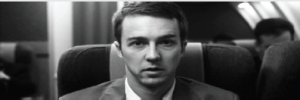tātari kiriata
“Be miserable. Or motivate yourself. Whatever has to be done, it’s always your choice.”
– Wayne Dyer
te ao Māori principles
There are key principals that we, as an English Department, consider important as part of a holistic study at school.
- Mana – The prestige and authority of the writer. Writers can build mana through impactful stories that uplift readers.
- Whanaungatanga – The connections and relationships between characters, writers, and readers. Literature brings people together.
- Kaitiakitanga – Guardianship and protection of stories, language, and knowledge. Writers have a duty to share stories responsibly.
- Wairuatanga – The spirituality and deeper meanings conveyed through literature. Stories can be profound and moving.
- Mauri – The essential life force or vitality of the writer coming through in their work. Writing with purpose and energy.
- Aroha – The empathy, compassion, and love writers show through their words. Literature builds understanding between people.
- Tikanga – The customs, protocols and values upheld through storytelling. Writers adhere to cultural principles.
Key Terms
| Narrative | a spoken or written account of connected events; a story. |
| Structure | the arrangement of and relations between the parts or elements of something complex. |
| Organisation | the way in which the elements of a whole are arranged. |
| Production | a film, record, play, etc., viewed in terms of its making or staging. |
| Design | the art or action of conceiving of and producing a plan or drawing of something before it is made. |
| Props | formally known as (theatrical) property, is an object actors use on stage or screen during a performance or screen production. |
| Foreground | the part of a view that is nearest to the observer, especially in a picture or photograph. |
| Background | the part of a picture, scene, or design that forms a setting for the main figures or objects, or appears furthest from the viewer. |
| Editing | prepare (written material) for publication by correcting, condensing, or otherwise modifying it. |
| Composition | the nature of something’s ingredients or constituents; the way in which a whole or mixture is made up. |
| Framing | make or construct (something) by fitting parts together or in accordance with a plan. |
| Mise-en-scene | the arrangement of the scenery, props, etc. on the stage of a theatrical production or on the set of a film. |
| Acting | the art or occupation of performing fictional roles in plays, films, or television. |
| Make Up | cosmetics such as lipstick or powder applied to the face, used to enhance or alter the appearance. |
| Costuming | dress (someone) in a particular set of clothes. |
| Dialogue | a conversation between two or more people as a feature of a book, play, or film. |
| Jump Cut | (in film or television) an abrupt transition from one scene to another. |
| Continuity Editing | the process of ensuring that within a sequence of cuts, each shot shows the same information. |
| Motif | a dominant or recurring idea in an artistic work. |
Learning Objectives
- To closely examine a selection of sequences and scenes within the film.
- To allocate the technical language associated with film study to the studied text.
Exercises
Spelling
| Jan. (January) | Feb. (February) | Approx. (Approximately) | Ave. (Avenue) | Blvd. (Boulevard) |
| Mr. (Mister) | Mrs. (Missus) | Ms. | Dr. (Doctor) | g. (gram) |
| kg. (kilogram) | cm. (centimetre) | hr. (hour) | min. (minute) | sec. (second) |
| lb. (pound) | pm (post-meridiem) | am (ante-meridiem) | etc. (etcetera) | misc. (miscellaneous) |
Summary Builder
Below is a piece of writing that you should attempt to summarise into around 100 words.
The Science of Habit Formation
Understanding the psychology behind how habits form provides insights into building good routines and breaking bad ones.
Habits form through a three-step loop – the cue, behaviour, and reward. A trigger in the environment cues our brain to perform a learned action that provided past reward. Repetition reinforces habit neuropathways.
To build habits, tie new behaviours to existing routines with implementation intentions like “After morning coffee, I will meditate for 10 minutes.” Consistency is key – new habits require sustained practice to stick.
The two-minute rule lowers barriers by shrinking a habit into a small first step that takes little motivation to start. From there, habits can be built up.
Temptation bundling associates activities you want to do more of with ones you don’t to motivate behaviour. For example, listen to favourite podcasts only during runs.
Stacking habits chains simple routines into sequenced progressions. Making your bed every morning cues you to get dressed right after. This builds momentum.
Understanding the habit cycle empowers us to circumvent old patterns. We can design lives intentionally populated by routines promoting health, productivity and happiness.
Film Analysis
tātari kiriata
Ko te reo te tuakiri | Language is my identity.
Ko te reo tōku ahurei | Language is my uniqueness.
Ko te reo te ora. | Language is life.

